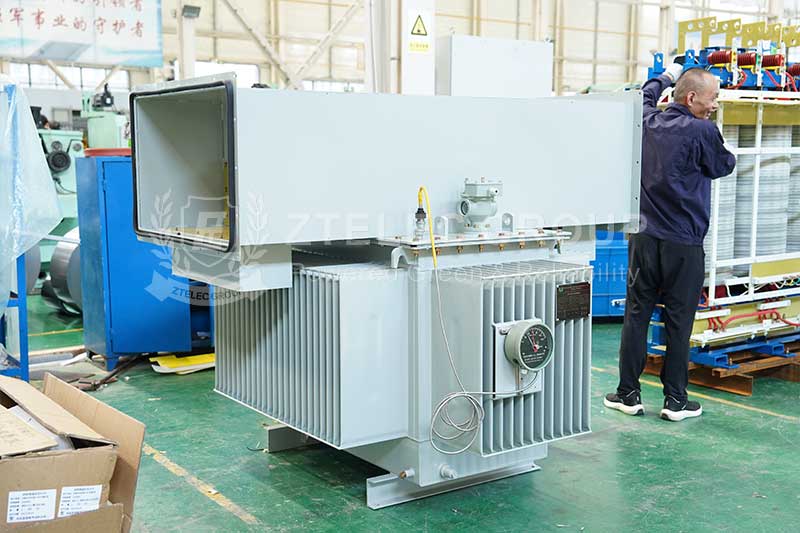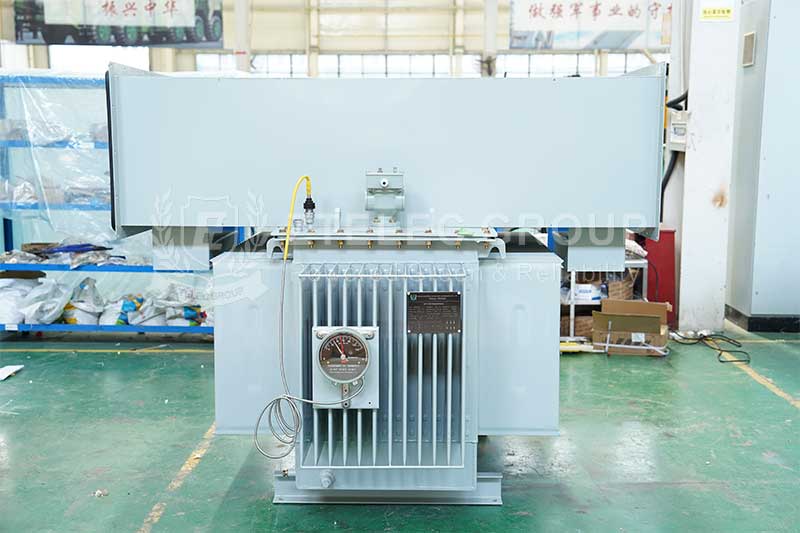Oil immersed transformer knowledge
What is an Oil-Immersed Transformer?
An oil-immersed transformer, also known as an oil-filled transformer, is a type of transformer that uses oil as a cooling medium to reduce its temperature. Unlike dry-type transformers, the main body of an oil-immersed transformer is installed in a welded steel tank filled with insulating oil. During operation, the heat from the coils and core is first transferred to the insulating oil, which then acts as the cooling medium. Depending on capacity, they can be classified into natural-cooling immersed transformers and forced-air cooled transformers.

Structure and Operating Principle of Oil-Immersed Transformers
Structurally, oil-immersed transformers are similar to transformers categorized by the insulation form of the core. Therefore, they have identifiable features of oil-immersed coils that can reduce the thermal profile of the equipment within.
The basic components of an oil-immersed transformer include the core, windings, and bushings. The core provides a path for magnetic flow. The windings create a magnetic field composed of conductive coils wound around the core and insulated by cardboard barriers and shielding layers. The thickness of the winding insulation increases with voltage. The bushings connect the transformer windings to the substation.
Oil-filled transformers are used in distribution or substations. Their cores and windings are immersed in oil, which provides both cooling and insulation. The oil circulates through conduits in the coils and around the core components via convection. At low ratings, the oil is cooled by the surrounding air, while at high ratings, cooling is achieved using air-cooled radiators.
Types of Oil-Immersed Transformers
Oil-immersed transformers are classified into two main types: single-phase transformers and three-phase transformers.
A. Single-phase oil-immersed transformer
B. Three-phase oil-immersed transformer

Purposes of Using Oil-Immersed Transformers
Oil-filled transformers can be installed on the ground, bases, or poles for outdoor use. They provide efficient performance in various applications, including power transmission and distribution networks, renewable energy generation, and small-scale industry.
Oil transformers have large capacities, thus saving a significant amount of electricity and minimizing energy losses, leading to energy conservation and reduced costs for users. Moreover, the oil within the machine cools the internal windings, thereby enhancing the durability and electrical performance of the transformer.
Precautions for Using Oil-Immersed Transformers
1. Oil-immersed transformers operate using oil, so the quality of the oil will significantly affect the transformer’s lifespan and safety.
2. During operation, regular inspections and maintenance of the transformer system are necessary to ensure safe and normal functioning. Otherwise, it poses risks of malfunction and extreme danger.
3. Waste generated from oil can easily pollute the environment and affect the lives of nearby people. Therefore, proper disposal of waste is also very important.
- more+releated article
- 2025-12-13How to Select and Use Phenolic Cloth-base Lami
- 2025-12-13How Much Does Bakelite Sheet Cost? 2025 Price
- 2025-12-13Why are most 3240 epoxy boards yellow?
- 2025-12-13What are the Main Applications of FR4 Epoxy Bo
- 2025-12-13Why Does the Price of Insulating Paperboard Va
- 2025-12-13Heat-Resistant DDP Insulation Paper
- 2025-12-13Comparison of Heat-Resistant DDP Insulating Pa
- 2025-12-13G10 and FR4 Epoxy Boards: Commonly Used for Ge
- 2025-12-13The Price of Heat-Resistant DDP Insulation Pap
- 2025-12-13How to Choose Epoxy Laminate Materials for Gen





